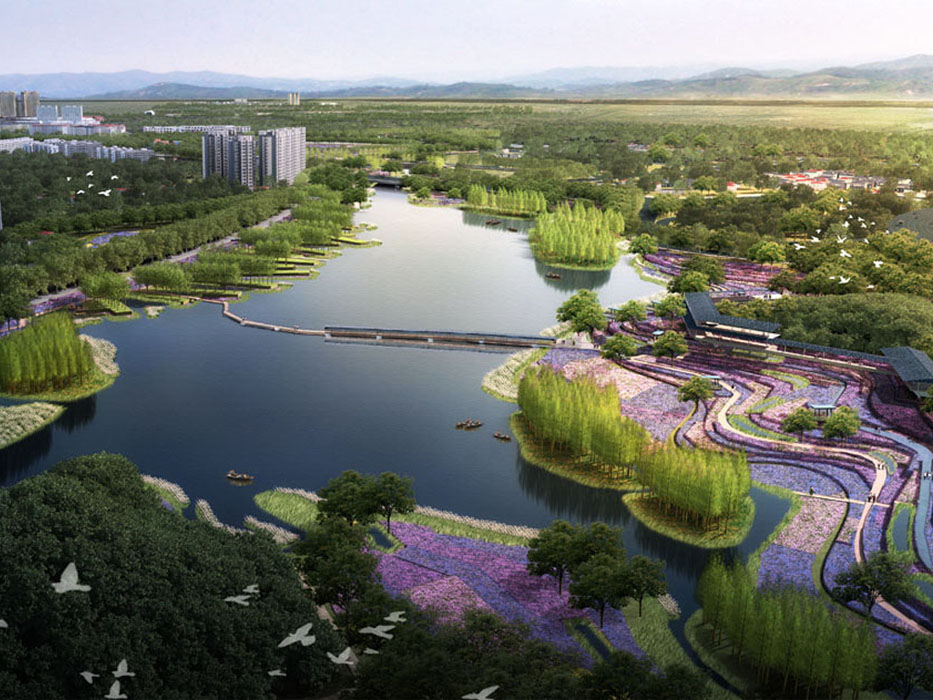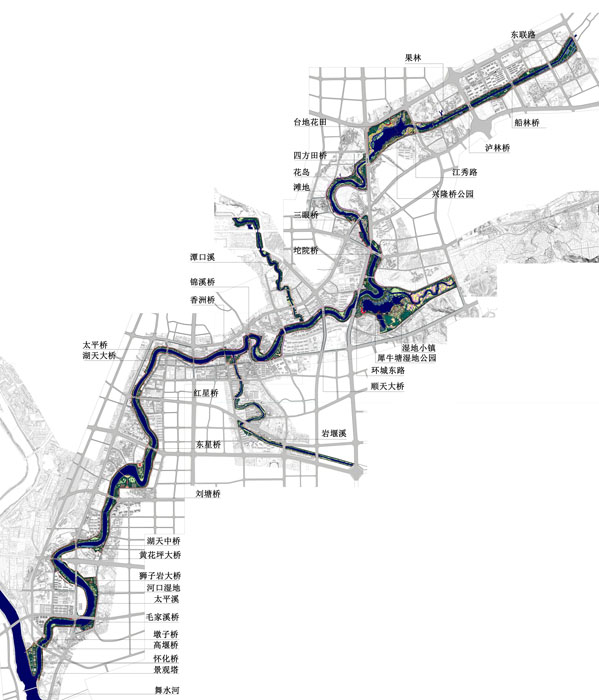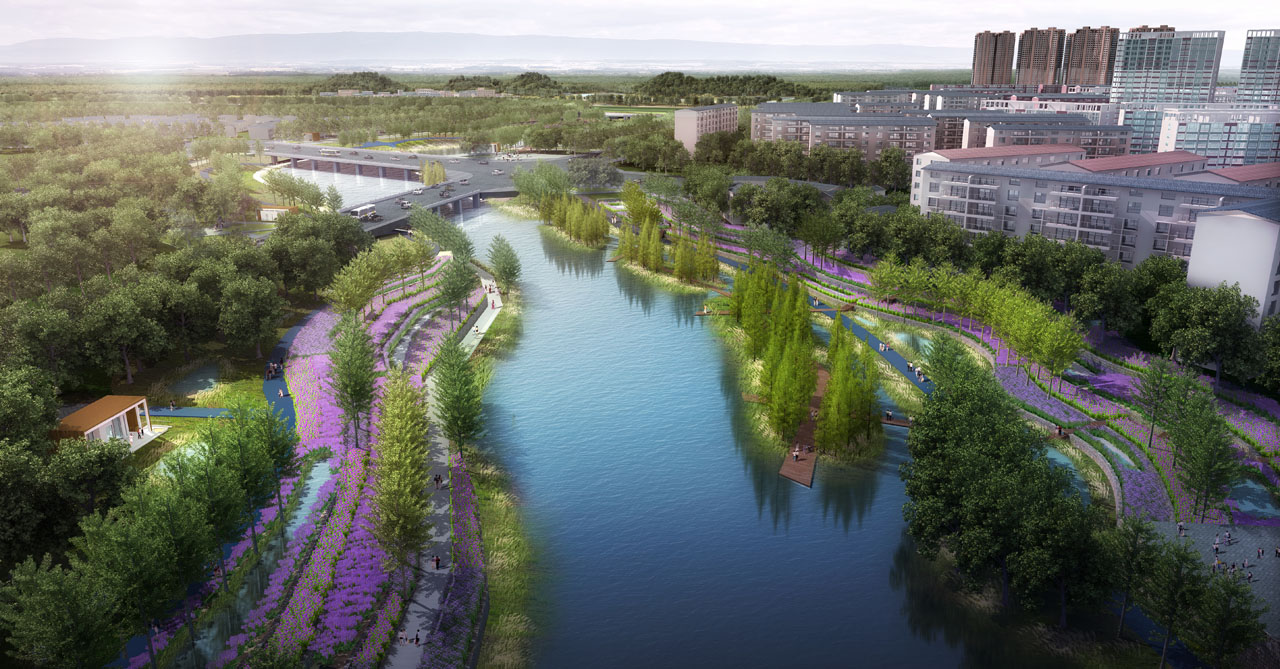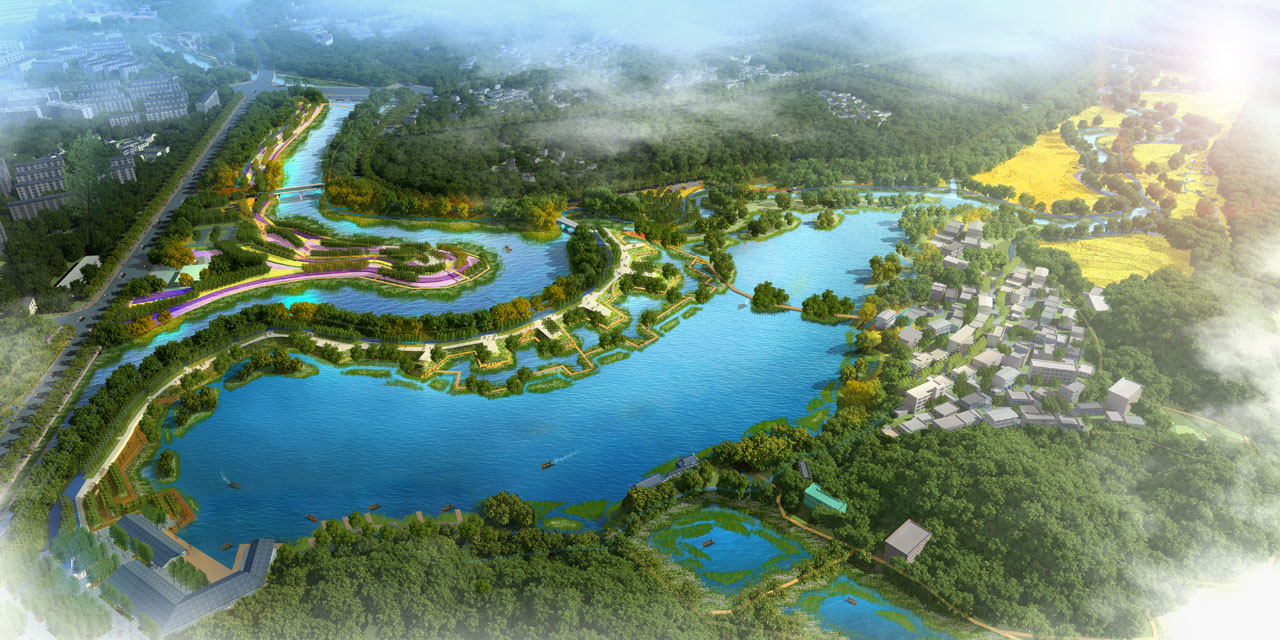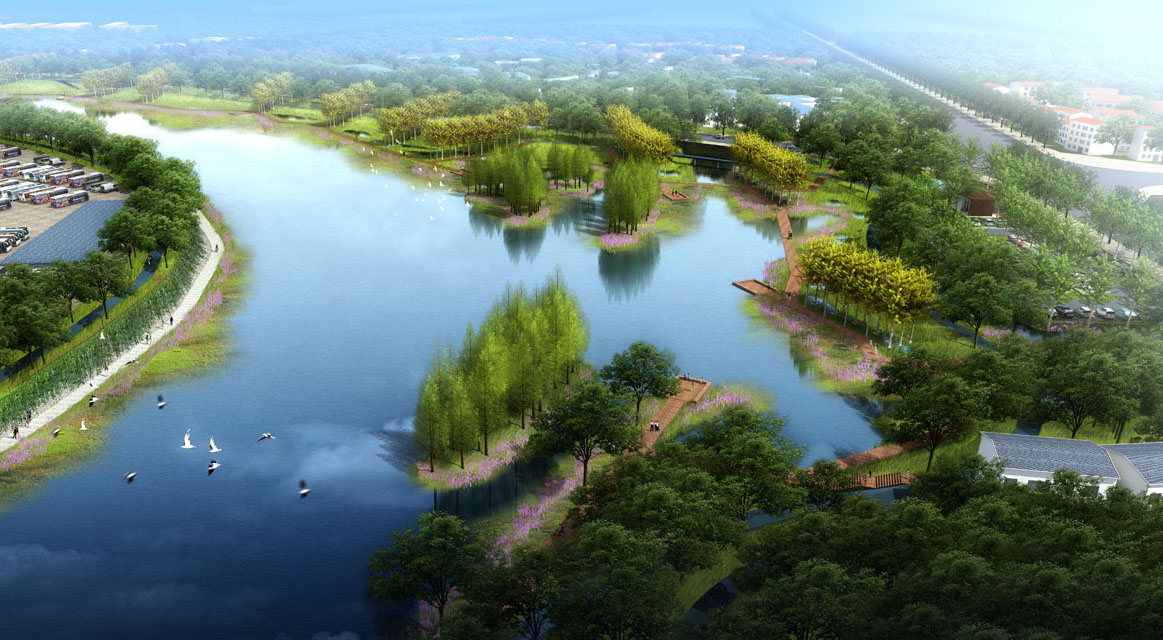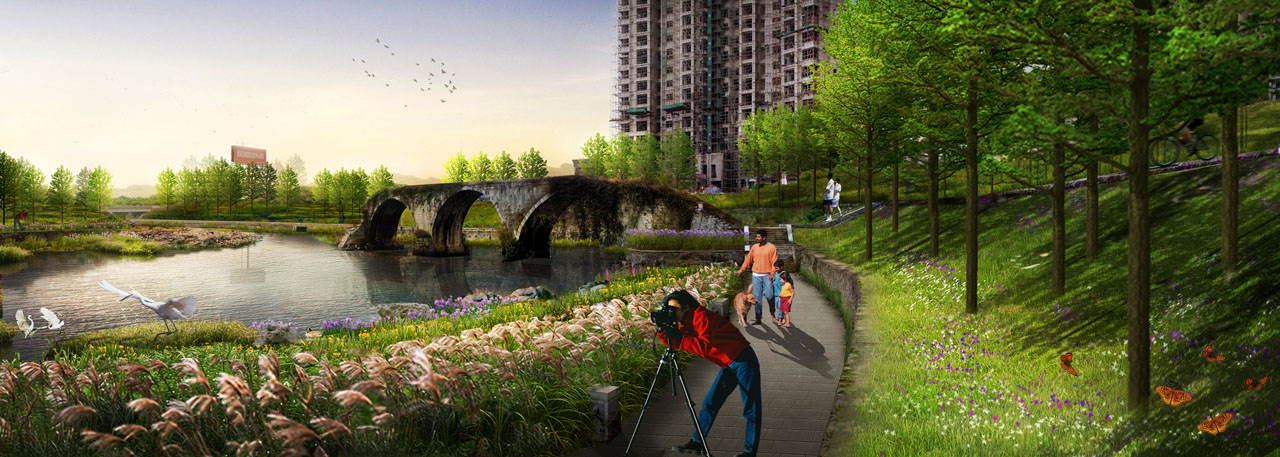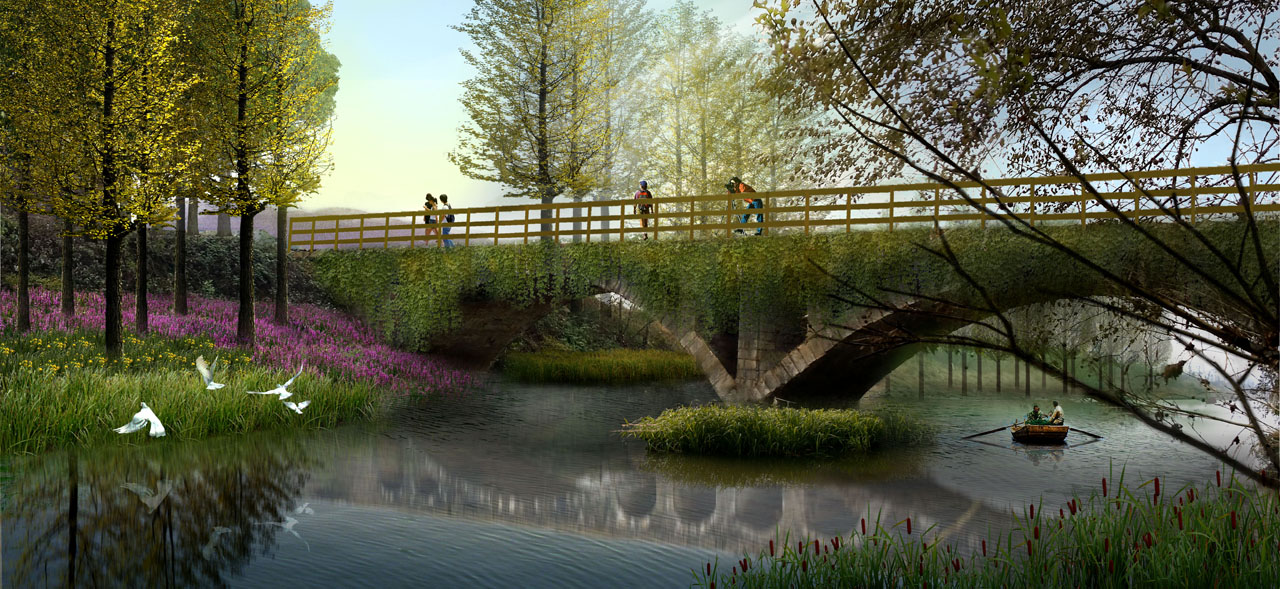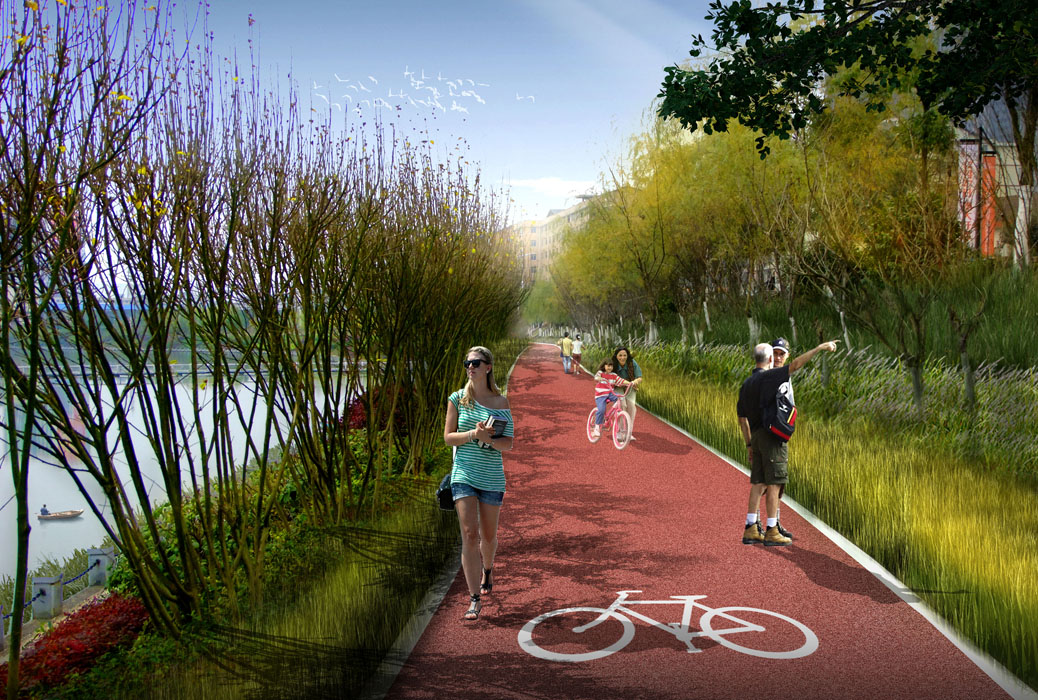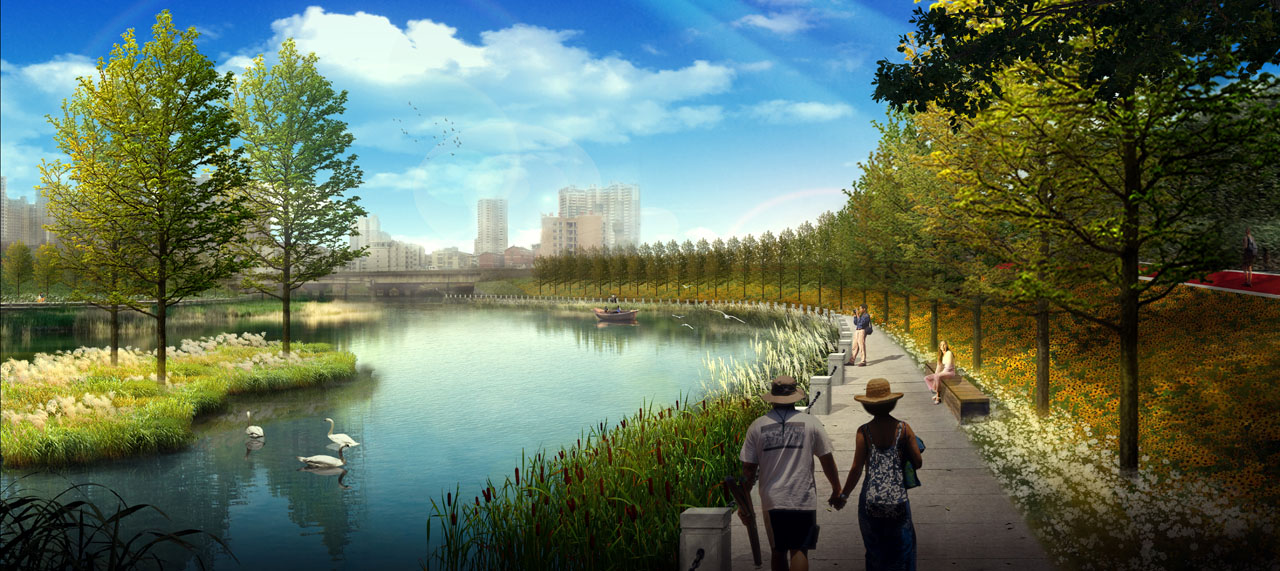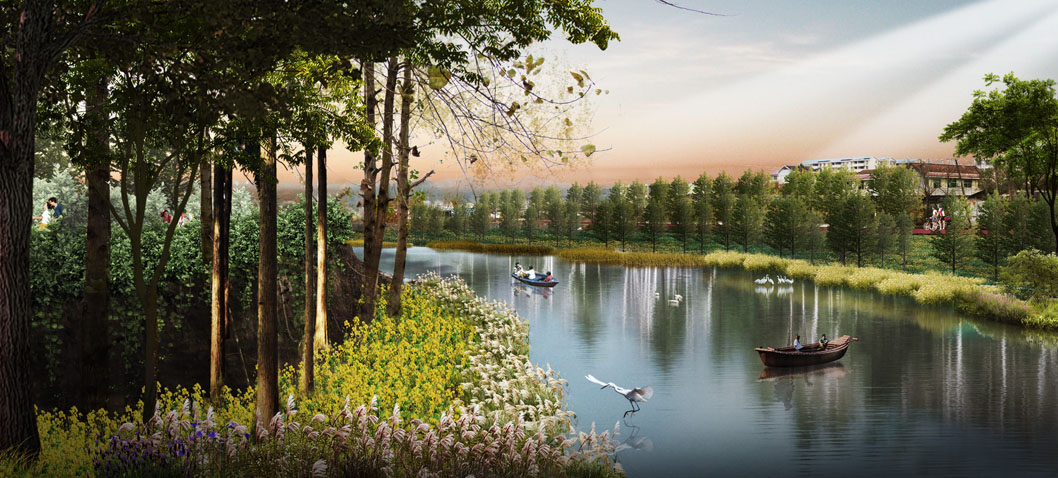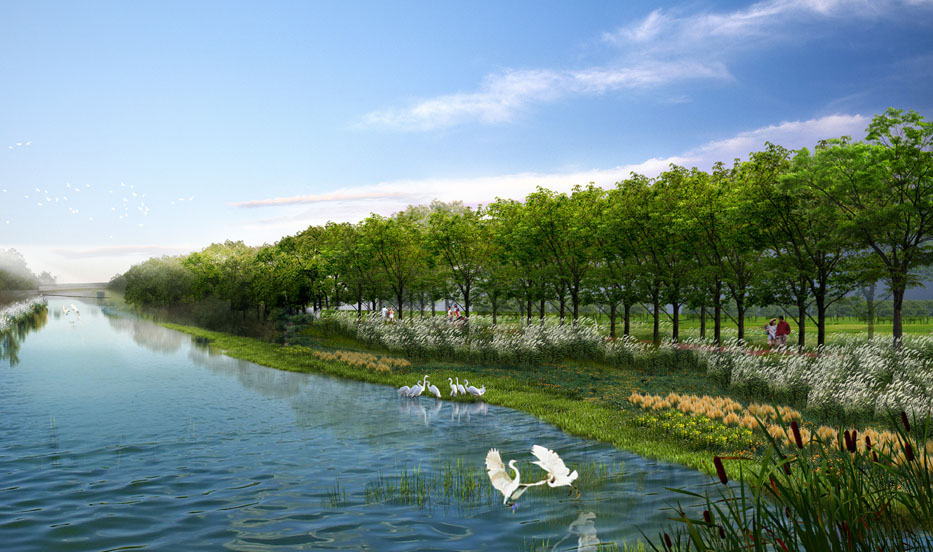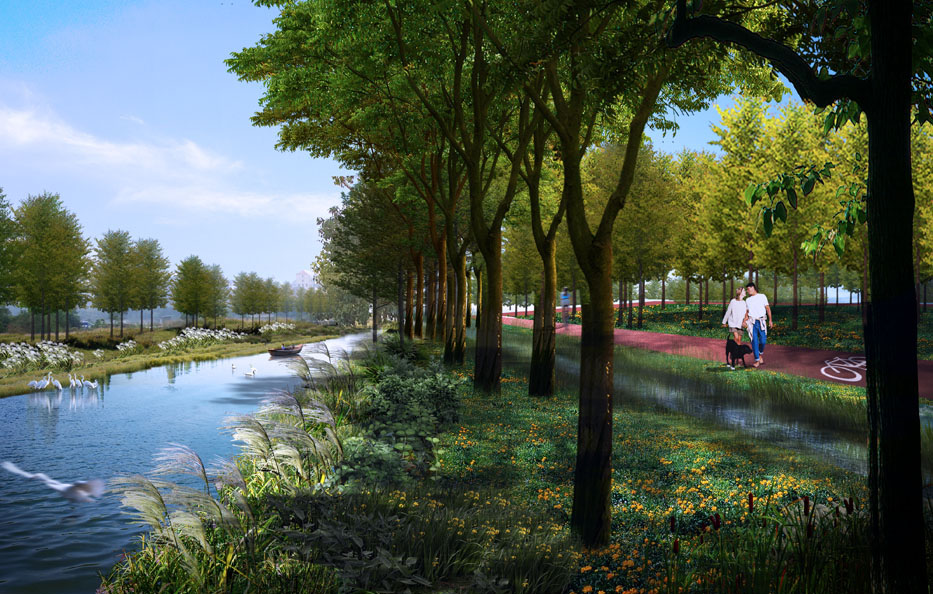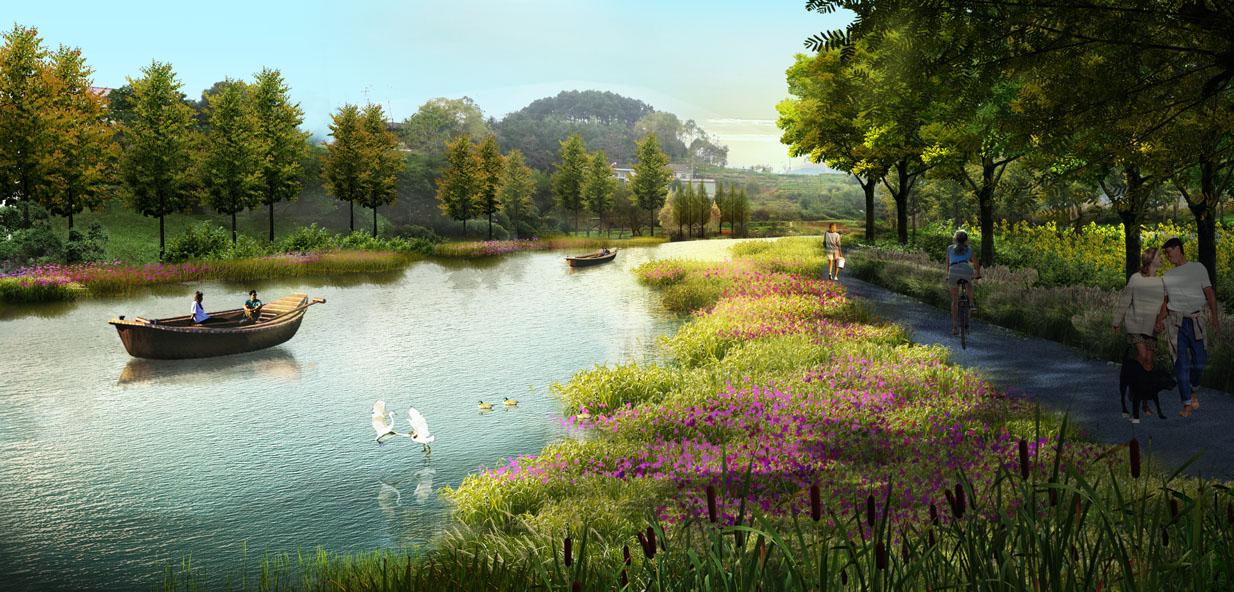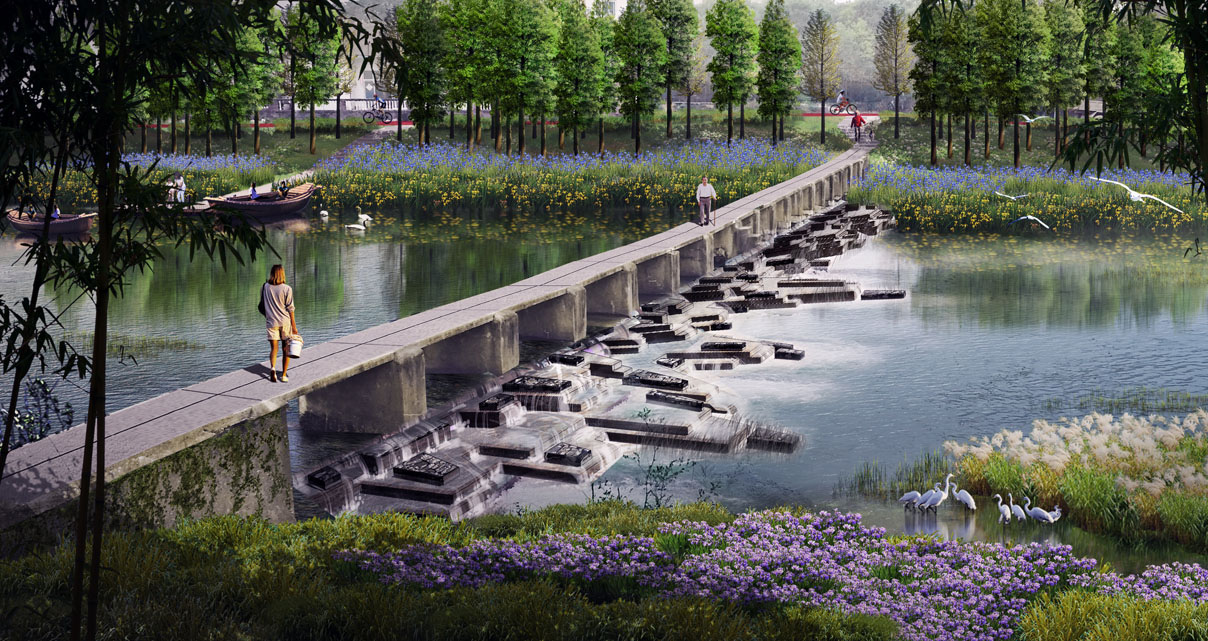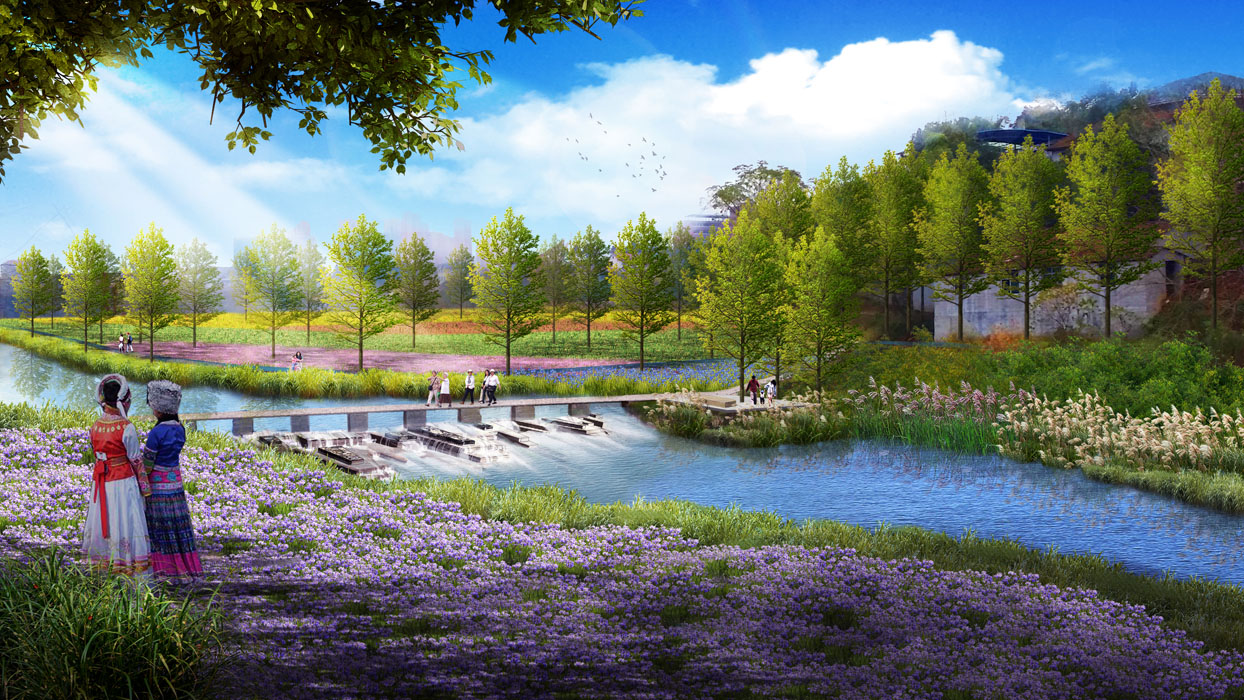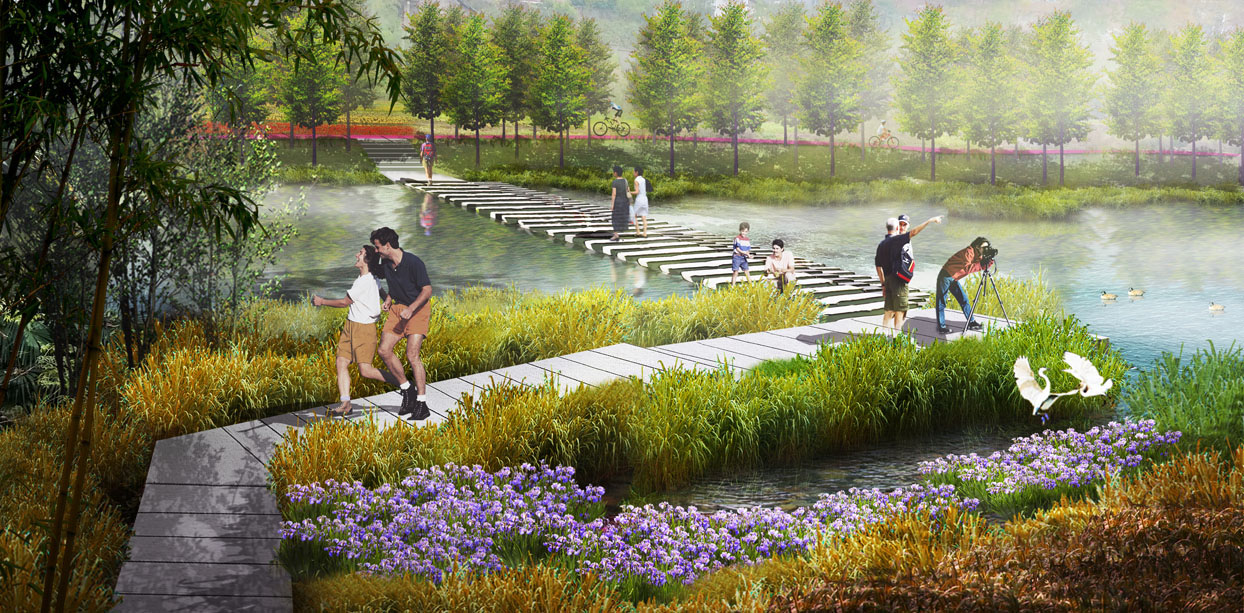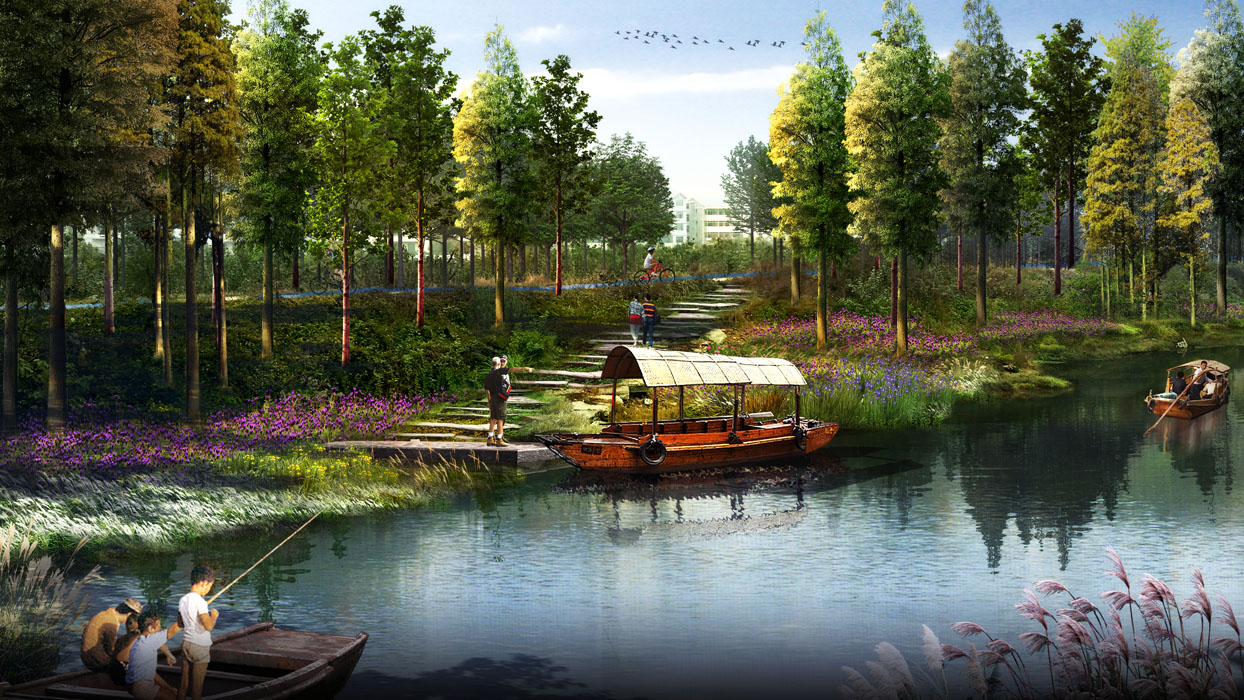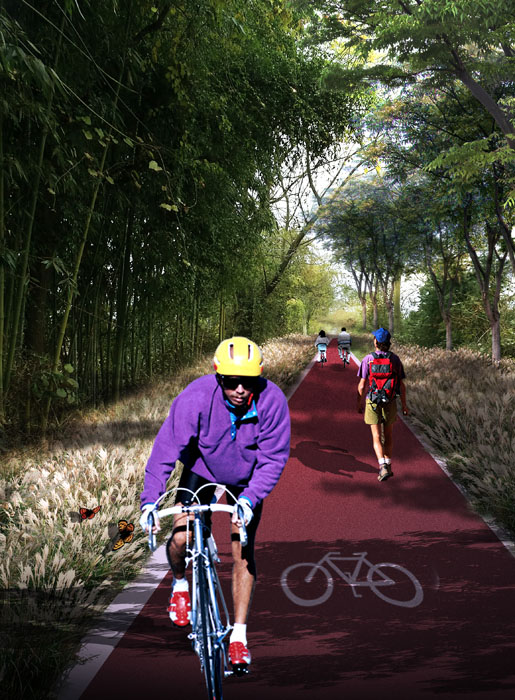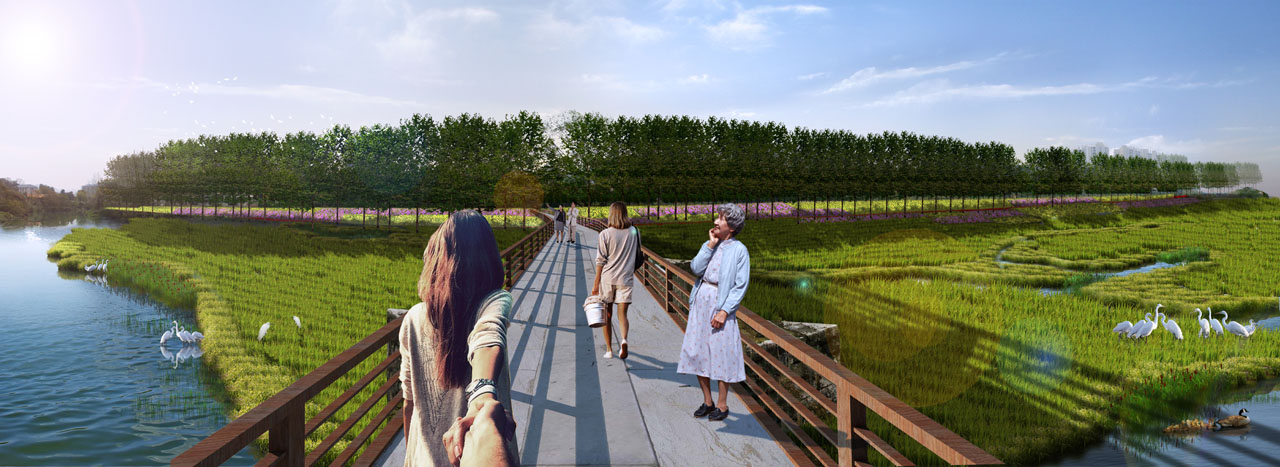Huaihua Taipingxi Comprehensive Management Planning
Project Information
- Project Location:
- China Huaihua, Hunan
- Project Scale:
- 151.99 Hectares
- Design Time:
- December 2015
Project Profile
1. Project Statement
Taipingxi is the most important "central nerve" and "vital artery" of the central urban area of Huaihua. The comprehensive management project of Taipingxi is a major initiative to improve the urban environment, enhance the city's quality, and increase people's happiness. It should be planned at a high starting point and constructed to high standards. Huaihua is known as the "Gateway to Yunnan and Guizhou" and the "Throat of Chu". It serves as the "bridgehead" from the eastern and central parts of China to the southwest. It has the reputation of being the "Western Gate of Hunan", with developed railway transportation, and is referred to as the "city brought by trains". The location is relatively advantageous, serving as an important transportation hub in the central and western regions. In the Song Dynasty, Huaihua was established with the meaning of "Huairou and Guihua" (pacification and assimilation), and the name Huaihua came from this. The city boasts many labels, such as "Bridgehead of the Great Southwest", "Original Ecological Botanical Garden", "Museum of Ancient Buildings", "Multi-ethnic Cultural Village", "Birthplace of Hybrid Rice", and "Acceptance Site of the Victory of the War of Resistance Against Japan". The city is rich in natural resources, with the saying "eight mountains, one water, one field". The diverse ethnic groups have created a rich and colorful folk culture. Historical sites include Furong Tower in Qiancheng, Hongjiang City, Huilong Bridge in Tongdao County, Longxing Lecture Temple in Yuanling County, Daqiaoxi Site in Xinhuang County, and the ancient commercial city in Hongjiang. The area is known for its outstanding natural and cultural heritage. The world-renowned "Father of Hybrid Rice", Yuan Longping, successfully cultivated hybrid rice here. The site of the Tongdao Transfer Meeting of the Chinese Workers' and Peasants' Red Army and the Memorial Hall for the Victory of the Chinese People's War of Resistance Against Japan both record significant events that influenced modern Chinese history. Taipingxi flows from northeast to southwest through the main urban area, creating a green waterfront corridor that integrates the city with nature.
2. Objective and Challenge
The planning area is located in Hecheng District, Huaihua City, Hunan Province. The main stream of Taipingxi is about 18.9 kilometers long, with a total planned land area of 152 hectares. It is an important green corridor in Huaihua, a city of mountains and water. The water quality in the planning area is relatively poor, with Class II water quality areas distributed in the eastern basin and pollution zones concentrated in the middle and lower reaches of the western basin. The comprehensive management of Taipingxi faces five major challenges:
- Water System Challenge: How to ensure urban flood safety? How to guarantee the water quality of Taipingxi?
- Shoreline Challenge: How to create a rich and distinctive waterfront landscape? How to create a pleasant waterside space?
- Slow Traffic Challenge: How to create a continuous slow traffic system? How to improve the accessibility of the riverside transportation system?
- Leisure Challenge: How to attract citizens to stay and engage in activities? How to create a diverse and vibrant waterside experience?
- Cultural Challenge: How to restore and display local culture? How to make it a new highlight for displaying Huaihua's culture to the outside world?
Taipingxi is Huaihua's most important ecological, recreational, and cultural corridor, and the ecological backbone of the eastern part of the city. The goal is to build it into a "green ecological corridor, comfortable riverside corridor, fashionable and vibrant waterfront, and colorful cultural corridor", achieving the objectives of "clear water, green shores, smooth roads, beautiful scenery, and cultural prosperity". The principles to adhere to include localization, low cost, low interference, precision, participation, practicality, and diversity.
3. Design Strategy
Breathing River Channels: Restore the natural form of the river, utilizing ponds, wetlands, and other sponge buffer zones to create breathing river channels that store water during rain and use it afterward.
Sponge Wetlands: Retain some original farmland to create productive wetlands such as flower fields and fish ponds. Construct flood prevention terraces and tiered slope landscapes to improve the river channel using ecological methods. Integrate rainwater purification systems, using both surface flow and subsurface flow wetlands, combining production and purification to turn wastewater into fertile water and create a productive river corridor.
Ecological Water Network: Set up the best viewing points at key landscape nodes to bring people closer to water. Build an urban ecological water network to connect the city with nature. Retain wetland ponds, create tiered wetlands, and build breathing river channels that serve as habitats for various species, becoming a paradise for both humans and animals. Design landscapes considering different water levels, adding aquatic plants, softening existing shorelines, and restoring the river ecosystem. Ensure vertical greening of stone slope protections and maintain different landscape experiences during flood and dry periods.
Green Travel, Enjoying a Happy Life: Create a dense road network and small-scale blocks to improve accessibility. Set up pedestrian-priority areas with public parking lots in peripheral areas and around urban public facilities. Build a slow traffic system that meets commuting and recreational needs, enhancing connectivity, and promoting a healthy, interactive slow travel experience along Taipingxi.
Functional Updates, Creating a New Taipingxi: Mix and permeate public service functions, gathering vitality along the riverside. Provide diverse facilities and activities to create a vibrant riverside interface. Develop key landscape nodes with minimal development for maximum social benefit. Enhance residents' quality of life by enriching spaces for sightseeing, leisure, recreation, and sports.
Cultural Design: Represent the city's image and act as an ecological window for external display. Enhance Huaihua's urban cultural connotations and brand through local architectural forms, showcasing local cultural landscape characteristics. Integrate modern and traditional cultural elements to display the beauty of Huaihua's culture accurately and conveniently through an interpretation system.
4. Conclusion
These landscape design strategies aim to build an ecological infrastructure system composed of an ecological green base, service facilities, a slow traffic system, and river water systems. This will explore new modes of ecological construction around Taipingxi, achieving the vision of "clear water, green shores, convenience, and leisure". By separating rainwater and sewage, ecologically purifying, and shaping a new city gateway image, using native plants with minimal intervention and low maintenance, creating a rich riverside landscape, and establishing a coherent slow traffic system to meet commuting and recreational needs. Integrate commercial facilities and sports venues along the shore to create a vibrant riverside interface.
